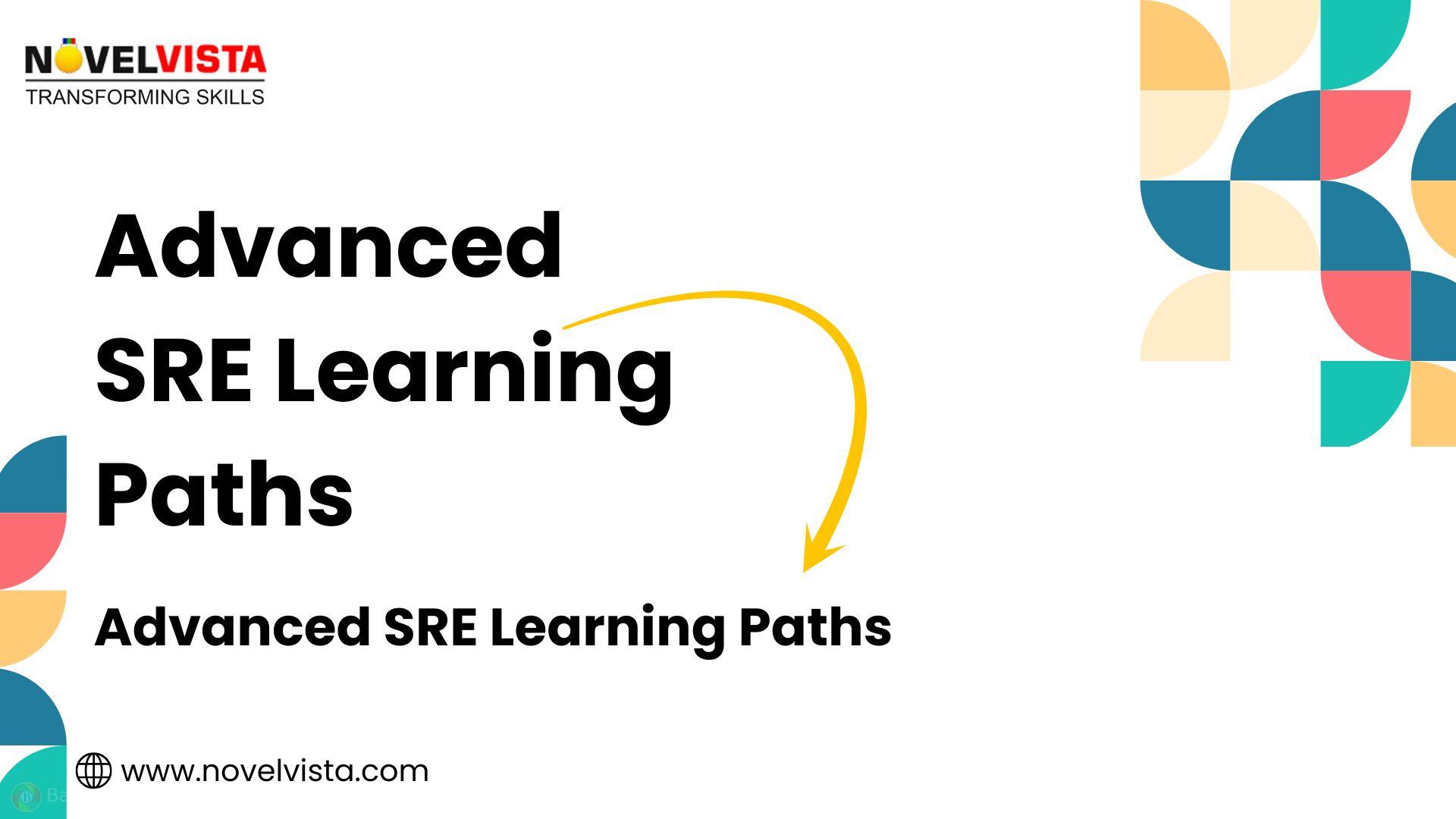Advanced SRE Learning Paths: Building Expertise Beyond the Basics
Site Reliability Engineering (SRE) has become a cornerstone for modern organizations that depend on scalable, reliable, and high-performing digital services. While entry-level SRE skills focus on monitoring, incident response, and automation basics, advanced SRE learning paths take professionals deeper into resilience engineering, systems design, and leadership. For engineers looking to future-proof their careers, mastering these advanced pathways is essential.
In this article, we’ll explore the key components of advanced SRE learning paths, why they matter, and how to strategically navigate them for long-term career growth.
Why Advanced SRE Learning Matters
Basic SRE training helps engineers manage day-to-day operations, but scaling digital infrastructure requires more. Advanced learning empowers professionals to:
Solve complex system failures with deep root cause analysis.
Architect resilient platforms capable of handling global traffic surges.
Balance reliability with innovation, aligning with business objectives.
Lead SRE teams, shaping incident management culture and engineering practices.
Organizations are increasingly seeking SRE leaders who not only keep systems up but also drive reliability as a business enabler.
Core Pillars of Advanced SRE Learning Paths
The SRE Certifications are not just about technical depth—they blend systems thinking, leadership, and business alignment. Here are the major focus areas:
1. Systems Architecture and Scalability
At the advanced level, SREs must understand distributed systems at scale. This includes:
Designing fault-tolerant, multi-region architectures.
Mastering microservices orchestration with Kubernetes, Istio, and service meshes.
Applying chaos engineering to test resilience under failure conditions.
2. Observability and Advanced Monitoring
Beyond logs and dashboards, advanced observability emphasizes:
Implementing OpenTelemetry for unified tracing.
Predictive monitoring using machine learning and AIOps.
Building proactive alerting systems that reduce noise and false positives.
3. Reliability Engineering at Scale
Advanced SRE paths focus on error budgets and service-level objectives (SLOs) at organizational scale. Engineers learn:
How to design SLOs that align with customer expectations.
Automating error budget policies into deployment pipelines.
Driving conversations between engineering and business stakeholders on risk trade-offs.
4. Security and Compliance Integration
Modern SREs cannot ignore security. Advanced learning integrates:
DevSecOps practices into reliability pipelines.
Infrastructure as Code (IaC) security.
Compliance automation for standards like ISO, SOC 2, or GDPR.
5. Leadership and Cultural Development
At this stage, SREs evolve into leaders. Key skills include:
Building blameless postmortem cultures.
Mentoring junior engineers and fostering continuous learning.
Influencing cross-functional teams to adopt reliability-first practices
Structured Learning Path for Advanced SREs
To master these pillars, professionals can follow a structured roadmap:
Deep Technical Specialization – Advanced courses in distributed systems, cloud-native design, and observability.
Certifications & Training – Programs like Google’s Professional Cloud DevOps Engineer or vendor-specific SRE certifications.
Hands-on Projects – Real-world experience through chaos engineering experiments, large-scale migrations, or reliability automation.
Leadership Development – Workshops on incident command, communication, and stakeholder management.
Continuous Learning – Staying updated with tools like Prometheus, Grafana, Datadog, and emerging AI-driven reliability platforms.
Conclusion
Advanced SRE learning paths are not just a career upgrade—they’re a necessity in today’s digital-first world. Engineers who invest in deep technical mastery, observability, security integration, and leadership development will stand out as future-ready SRE leaders.
By following a structured learning path and continuously adapting to evolving tools, you can move beyond firefighting incidents to designing reliable systems that power business success.
Site Reliability Engineering (SRE) has become a cornerstone for modern organizations that depend on scalable, reliable, and high-performing digital services. While entry-level SRE skills focus on monitoring, incident response, and automation basics, advanced SRE learning paths take professionals deeper into resilience engineering, systems design, and leadership. For engineers looking to future-proof their careers, mastering these advanced pathways is essential.
In this article, we’ll explore the key components of advanced SRE learning paths, why they matter, and how to strategically navigate them for long-term career growth.
Why Advanced SRE Learning Matters
Basic SRE training helps engineers manage day-to-day operations, but scaling digital infrastructure requires more. Advanced learning empowers professionals to:
Solve complex system failures with deep root cause analysis.
Architect resilient platforms capable of handling global traffic surges.
Balance reliability with innovation, aligning with business objectives.
Lead SRE teams, shaping incident management culture and engineering practices.
Organizations are increasingly seeking SRE leaders who not only keep systems up but also drive reliability as a business enabler.
Core Pillars of Advanced SRE Learning Paths
The SRE Certifications are not just about technical depth—they blend systems thinking, leadership, and business alignment. Here are the major focus areas:
1. Systems Architecture and Scalability
At the advanced level, SREs must understand distributed systems at scale. This includes:
Designing fault-tolerant, multi-region architectures.
Mastering microservices orchestration with Kubernetes, Istio, and service meshes.
Applying chaos engineering to test resilience under failure conditions.
2. Observability and Advanced Monitoring
Beyond logs and dashboards, advanced observability emphasizes:
Implementing OpenTelemetry for unified tracing.
Predictive monitoring using machine learning and AIOps.
Building proactive alerting systems that reduce noise and false positives.
3. Reliability Engineering at Scale
Advanced SRE paths focus on error budgets and service-level objectives (SLOs) at organizational scale. Engineers learn:
How to design SLOs that align with customer expectations.
Automating error budget policies into deployment pipelines.
Driving conversations between engineering and business stakeholders on risk trade-offs.
4. Security and Compliance Integration
Modern SREs cannot ignore security. Advanced learning integrates:
DevSecOps practices into reliability pipelines.
Infrastructure as Code (IaC) security.
Compliance automation for standards like ISO, SOC 2, or GDPR.
5. Leadership and Cultural Development
At this stage, SREs evolve into leaders. Key skills include:
Building blameless postmortem cultures.
Mentoring junior engineers and fostering continuous learning.
Influencing cross-functional teams to adopt reliability-first practices
Structured Learning Path for Advanced SREs
To master these pillars, professionals can follow a structured roadmap:
Deep Technical Specialization – Advanced courses in distributed systems, cloud-native design, and observability.
Certifications & Training – Programs like Google’s Professional Cloud DevOps Engineer or vendor-specific SRE certifications.
Hands-on Projects – Real-world experience through chaos engineering experiments, large-scale migrations, or reliability automation.
Leadership Development – Workshops on incident command, communication, and stakeholder management.
Continuous Learning – Staying updated with tools like Prometheus, Grafana, Datadog, and emerging AI-driven reliability platforms.
Conclusion
Advanced SRE learning paths are not just a career upgrade—they’re a necessity in today’s digital-first world. Engineers who invest in deep technical mastery, observability, security integration, and leadership development will stand out as future-ready SRE leaders.
By following a structured learning path and continuously adapting to evolving tools, you can move beyond firefighting incidents to designing reliable systems that power business success.
Advanced SRE Learning Paths: Building Expertise Beyond the Basics
Site Reliability Engineering (SRE) has become a cornerstone for modern organizations that depend on scalable, reliable, and high-performing digital services. While entry-level SRE skills focus on monitoring, incident response, and automation basics, advanced SRE learning paths take professionals deeper into resilience engineering, systems design, and leadership. For engineers looking to future-proof their careers, mastering these advanced pathways is essential.
In this article, we’ll explore the key components of advanced SRE learning paths, why they matter, and how to strategically navigate them for long-term career growth.
Why Advanced SRE Learning Matters
Basic SRE training helps engineers manage day-to-day operations, but scaling digital infrastructure requires more. Advanced learning empowers professionals to:
Solve complex system failures with deep root cause analysis.
Architect resilient platforms capable of handling global traffic surges.
Balance reliability with innovation, aligning with business objectives.
Lead SRE teams, shaping incident management culture and engineering practices.
Organizations are increasingly seeking SRE leaders who not only keep systems up but also drive reliability as a business enabler.
Core Pillars of Advanced SRE Learning Paths
The SRE Certifications are not just about technical depth—they blend systems thinking, leadership, and business alignment. Here are the major focus areas:
1. Systems Architecture and Scalability
At the advanced level, SREs must understand distributed systems at scale. This includes:
Designing fault-tolerant, multi-region architectures.
Mastering microservices orchestration with Kubernetes, Istio, and service meshes.
Applying chaos engineering to test resilience under failure conditions.
2. Observability and Advanced Monitoring
Beyond logs and dashboards, advanced observability emphasizes:
Implementing OpenTelemetry for unified tracing.
Predictive monitoring using machine learning and AIOps.
Building proactive alerting systems that reduce noise and false positives.
3. Reliability Engineering at Scale
Advanced SRE paths focus on error budgets and service-level objectives (SLOs) at organizational scale. Engineers learn:
How to design SLOs that align with customer expectations.
Automating error budget policies into deployment pipelines.
Driving conversations between engineering and business stakeholders on risk trade-offs.
4. Security and Compliance Integration
Modern SREs cannot ignore security. Advanced learning integrates:
DevSecOps practices into reliability pipelines.
Infrastructure as Code (IaC) security.
Compliance automation for standards like ISO, SOC 2, or GDPR.
5. Leadership and Cultural Development
At this stage, SREs evolve into leaders. Key skills include:
Building blameless postmortem cultures.
Mentoring junior engineers and fostering continuous learning.
Influencing cross-functional teams to adopt reliability-first practices
Structured Learning Path for Advanced SREs
To master these pillars, professionals can follow a structured roadmap:
Deep Technical Specialization – Advanced courses in distributed systems, cloud-native design, and observability.
Certifications & Training – Programs like Google’s Professional Cloud DevOps Engineer or vendor-specific SRE certifications.
Hands-on Projects – Real-world experience through chaos engineering experiments, large-scale migrations, or reliability automation.
Leadership Development – Workshops on incident command, communication, and stakeholder management.
Continuous Learning – Staying updated with tools like Prometheus, Grafana, Datadog, and emerging AI-driven reliability platforms.
Conclusion
Advanced SRE learning paths are not just a career upgrade—they’re a necessity in today’s digital-first world. Engineers who invest in deep technical mastery, observability, security integration, and leadership development will stand out as future-ready SRE leaders.
By following a structured learning path and continuously adapting to evolving tools, you can move beyond firefighting incidents to designing reliable systems that power business success.
1 Commentarios
·5K Views
·0 Vista previa



